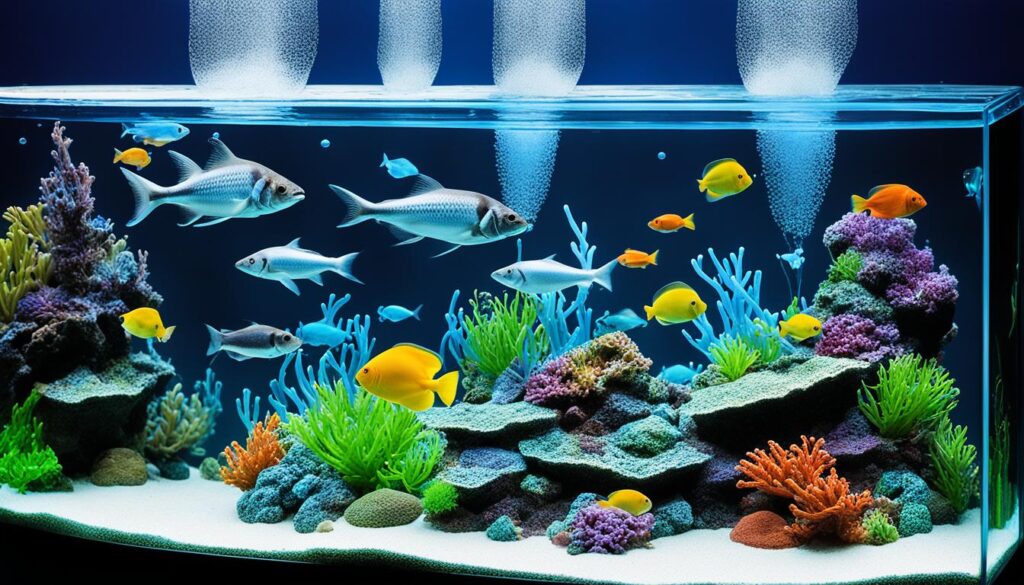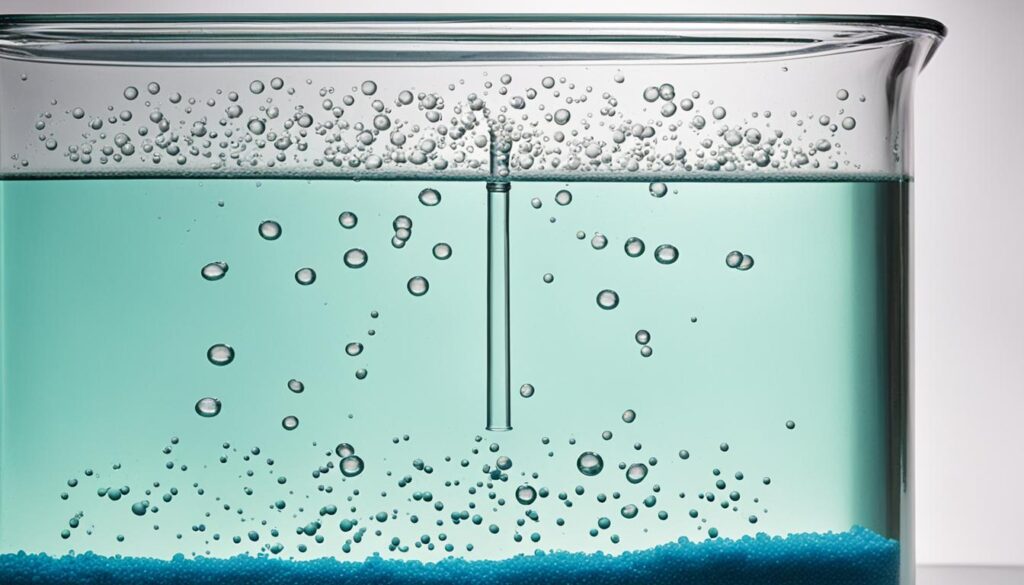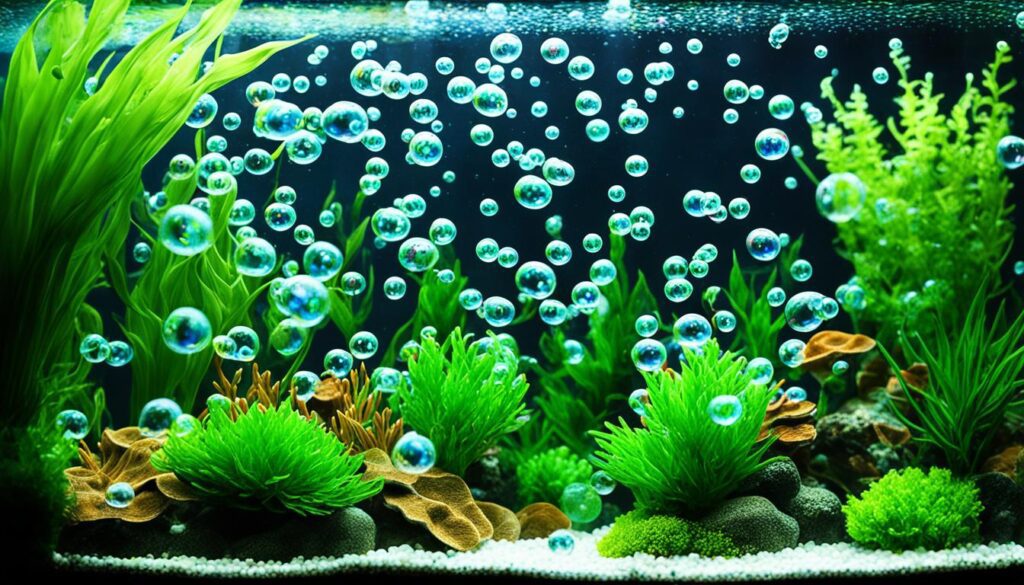As someone who’s all about aquariums, I get how important it is to keep the oxygen levels just right. It’s not just for the fish—plants need balance, too, with enough oxygen for the fish and CO2 for the plants. Nailing that balance takes some know-how and constant monitoring.
Oxygen is essential for everything in your tank, from the fish to corals, and even the good bacteria that keep things running smoothly. If the oxygen levels drop too low, you’ll start seeing your fish gasping for air. So, keeping the water oxygenated is a must.
One of the easiest ways to boost oxygen is by getting the water moving. Powerheads, wave makers, or anything that stirs up the surface will do wonders. When the water moves, it lets oxygen in and releases CO2, creating a healthier environment. Plus, a clean tank helps keep oxygen levels up.
During the day, your plants and algae do their part by giving off oxygen—so they’re not just there to look good, they literally breathe life into your tank. But when the lights go off at night, plants stop producing oxygen. That’s when air pumps or air stones come in handy to keep oxygen flowing even in the dark.
Let’s dive into how to keep a healthy aquarium together. I’ve got tips and advice to help you maintain the best oxygen levels so your fish, plants, and all the other tank life can thrive. Understanding the basics and taking the right steps will go a long way!
Understanding the Oxygen and CO2 Balance in Your Aquarium

Keeping a perfect aquarium CO2 balance is key for the health of your fish and plants. This balance is important for aquatic respiration and photosynthesis in fish tanks. It helps maintain a healthy ecosystem in your aquarium.
The Role of Oxygen for Aquatic Life
Oxygen is very important in an aquarium. It helps with aquatic respiration, breaking down waste, and supporting good bacteria. Fish need between 6-8 mg/L of dissolved oxygen to stay healthy and active. If oxygen gets low, fish show stress by moving their gills fast or gasping for air. This means they need more oxygen right away.
The Interaction Between CO2 and Oxygen
In a planted aquarium, CO2 and oxygen work together in photosynthesis. During the day, plants use CO2 and give off oxygen. At night, they do the opposite and use oxygen. This is why it’s important to keep CO2 levels steady during the day. It helps keep plants and fish healthy.
Effects of Imbalanced CO2 Levels on Fish and Plants
Too much or too little CO2 hurts your aquarium’s health. High CO2 makes water acidic and lowers oxygen, which is bad for fish and plants. To keep CO2 levels right, use tools like CO2 drop checkers. This stops CO2 from getting too high.
- Maintaining roughly 6-8 mg/L of dissolved oxygen;
- Ensuring CO2 levels are stable for photosynthesis and to control algae growth;
- Using air pumps or water movements to keep gases balanced and the environment healthy.
Getting the oxygen and CO2 balance right isn’t only about equipment. It’s also about regular care and watching your aquarium closely. This ensures all living things in it do well.
Methods for Incorporating CO2 Into Your Aquarium

If you keep fish or plants in an aquarium, it’s crucial to know how to add CO2. Options like CO2 injection systems, liquid CO2 supplements, and DIY CO2 generation can help a lot. These methods make your aquarium healthier for both fish and plants.
CO2 injection systems are popular for a reason. They work well in tanks that have lots of plants and need a lot of light. You’ll need a CO2 tank, regulator, needle valve, bubble counter, drop checker, and diffuser for a good system. A drop checker is very useful. It lets you see and adjust the CO2 levels, keeping them perfect.
If you like making things yourself, DIY CO2 generation could be fun. It saves money and feels rewarding. People use everyday items and basic tools, such as glass jars, suction cups, and drills. For instance, making a drop checker involves baking soda and distilled water. This DIY tool shows CO2 levels in your tank by changing color.
For smaller tanks, liquid CO2 supplements are simple to use. They’re great if you don’t need much CO2. Just make tweaks and keep an eye on your tank to use it right without wasting CO2.
Whatever method you pick, staying on top of it is key. With a CO2 injection system or a DIY CO2 setup, often check things like bubble counters and needle valves. This helps your CO2 setup work well for longer.
These CO2 methods boost plant growth and make your aquarium look great. Just remember, the success lies in consistent care and adjustments. This matches your plants’ growing needs.
Maintaining Proper Oxygen Levels Through Tank Management

Keeping the right oxygen levels in your fish tank is very important for your fish and plants. You can use air pumps, improve tank aeration, and make sure the water quality is good. These steps are key to keeping a healthy environment in your aquarium.
Regular Cleaning Regimes and Oxygenation
Cleaning the aquarium regularly is more than making it look nice. It helps with oxygen levels. Things like leftover food and plant bits reduce oxygen when they break down. Cleaning often and using air pumps boosts oxygen. This is especially needed at night when plants don’t make oxygen.
This keeps everything in your tank living well.
Strategies for Monitoring Oxygen Saturation
It might seem hard to keep an eye on your tank’s oxygen. Yet, with the right tools, it’s easy. Dissolved oxygen meters give you exact numbers. Watching if your fish breathe fast can also show if oxygen is low. Then, you can fix your tank aeration system if needed.
Optimizing Water Movement for Maximum Oxygenation
Good water flow is key for spreading oxygen in the tank. Use powerheads and air stones, and keep your filters working well. This makes sure oxygen gets everywhere and keeps the water clean. Too many fish can cause problems with water flow and oxygen, so don’t have too many in your tank.
Every aquarium is different, depending on its size and what lives in it. Adapting these tips to your tank will help you keep it oxygen-rich. From putting air pumps in the right spots to regular checks and tweaks, every step matters. They all help keep your aquarium healthy and full of life.
The Importance of Monitoring and Adjusting Aquarium Conditions
The balance in an aquarium is delicate, especially with CO2 and oxygen levels. My aquatic friends’ well-being depends on this balance. To keep their home healthy, I monitor CO2 closely. I use CO2 drop checkers and test kits to measure accurately. This lets me adjust CO2 levels well, using either injection systems or liquid CO2 supplements.
Every choice I make affects my aquarium’s life. The plants I add and the filter system I use are important. They help sustain aquatic life sustainability. To add oxygen, I improve water movement or add plants. This makes a healthy, beautiful underwater world. If CO2 gets too high, I adjust it quickly. I might increase surface water movement or change the water to protect the life inside.
But it’s not all about fixing problems. Being proactive is key. I keep an eye on the water temperature, making sure it’s safe. Plants need the right light for photosynthesis, and I manage chemicals carefully. Sometimes, emergencies happen. I might need to change the water fast or increase oxygen. This helps keep everything safe quickly. The aim is to have a place where fish and plants thrive, creating a beautiful, healthy aquarium.








